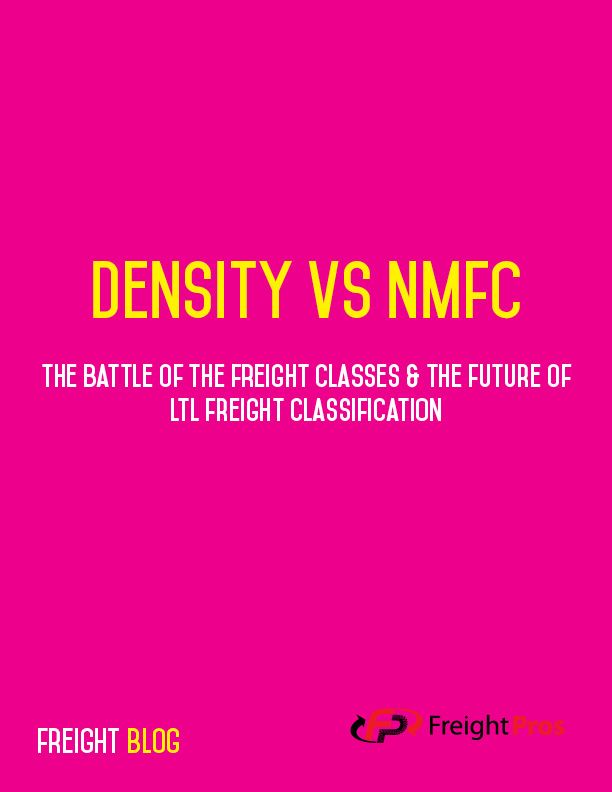
There are two ways to class freight in LTL: Density or NMFC. We’ve already discussed at length the explaining of freight class, and we’ve even got a Free Freight Paper on The Mysteries of Freight Class, but as carriers such as Fedex and UPS begin the process of density/dimensional pricing for their small package shipments, it’s worth looking at this trend and how it may work its way into LTL shipping.
NMFC classing is the traditional standard for classing freight. In this system freight items are assigned a class number designated by the National Motor Freight Traffic Association, ranging from 50 to 500. Generally speaking, the lower the class the lower the cost of shipping.
These numbers are always evolving, and to be honest, can seem a bit arbitrary. Though they are supposed to indicate an item’s ability to be shipped safely – for better or worse – it can be hard to find the correct NMFC number and keep it.
The alternative, and more modern form of classing, is the density classing standard. This classing system is based on an item’s density, ergo, a rating based on an item’s dimensions and weight. A freight density calculator and freight class density chart can help with that. This gives a better outlined precedent for an item’s shipability, as an item taking up more space and weighing less will often be more fragile than an item taking up less space, but weighing more.
The second item will be more dense, and likely will have a lower freight class number – hence cheaper to ship. Right now, Central Transport is the only LTL carrier that uses density exclusively, but even the NMFTA is moving more and more NMFC numbers over to density-classing.
As density begins to become the industry standard for freight class, it will become more important to have the exact weight and dimensions of your LTL freight. Incorrect weight or dimensions could lead to incorrect density ratings, wrong classes, and a whole lot of the dreaded re-class.